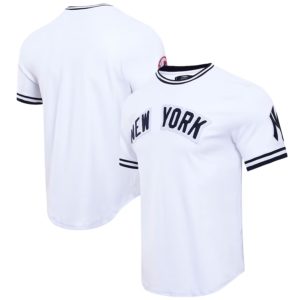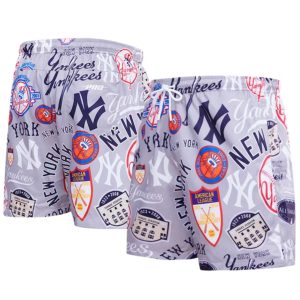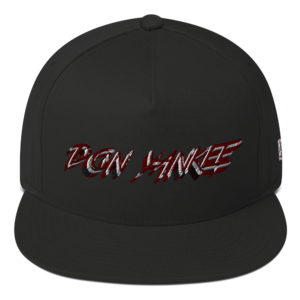Since 1973, the debate over the designated hitter has raged on throughout Major League Baseball. In my time covering baseball, particularly the Yankees, I have had first-hand experiences with those arguing for the DH. In 2008, promising starting pitcher Chien-Ming Wang was the heir apparent to the number one spot in the rotation. However, in what became a 13-0…
Since 1973, the debate over the designated hitter has raged on throughout Major League Baseball.
In my time covering baseball, particularly the Yankees, I have had first-hand experiences with those arguing for the DH. In 2008, promising starting pitcher Chien-Ming Wang was the heir apparent to the number one spot in the rotation.
However, in what became a 13-0 win in Houston (while the Astros were still in the National League), Wang tore two ligaments in his right foot, ending his season. He played a few more years in the show, but only a few more games in pinstripes.
More recently, Masahiro Tanaka suffered mild strains in both hamstrings while scoring on a sacrifice fly last weekend at Citi Field in the Subway Series. General manager Brian Cashman has said he believes he will miss about a month. Tanaka’s injury brings focus back to the question of the designated hitter’s absence in the National League. This week, I sat down and spoke with two good friends, and former Major League pitchers, Al Santorini and Fred Cambria, about the designated hitter, and the evolution of pitching.
Santorini pitched six seasons with the Braves, Padres, and Cardinals from 1968 to 1973. Born in Irvington, not too far from my home, Santorini gave some of his thoughts about the injury to Tanaka and some of his experiences on the base paths.
Santorini pitched only in the National League, and even though the DH first appeared in his final season, inter-league play did not yet exist. He mentioned the benefits of hitting as a pitcher, such as being the first Padre pitcher to hit a home run, when he did so on a first pitch backup slider from Steve Renko in Montreal’s Jarry Park in 1969. However, Santorini also discussed the negative aspects at the plate, on the base paths, and on the mound.
He remembered how little athleticism pitchers have on the bases when he told me of another incident in 1969. Former teammate Tony Gonzalez was at the dish, and Santorini stood off second. The lack of athleticism in pitchers on the base paths kicked in when he was picked off by the Dodgers.
Forty two years later, Santorini crouched, playing second base in Central Park, in a game to benefit the Michael J. Fox Foundation. With Brooklyn actor Tony Lo Bianco on the mound, Santorini moved to his left trying to field a grounder. As he mentioned to me, not playing every day, and being 64 years old, did not help prevent a hamstring pull. Santorini added that, as his teammates carried him off the field, his leg acted a little like Elvis Presley in the way it swung.
Now, seven years after the later incident, he gave his opinion on pitching regimens today. Santorini’s workouts included 12-14 sprints before game, each about halfway from one foul line to the other in the outfield. His regimen also stood out from those today by the fact that he would shag fly balls. Santorini told me he believes Tanaka’s injury resulted from uncertainty about sliding, which caused him to tense up midway between third and home.
As for the DH, he is a purist, who believes in letting pitchers hit, and enjoyed facing them, but he also believes the American and National Leagues should be equal, at least for the sake of fair play.
Queens native Fred Cambria is also a purist. Though his major league career ended after one season due to an arm injury, Cambria posted a 3.51 ERA during his time with a Pirates team that won the World Series the next year, and gave intelligent opinions on the state of baseball.
Cambria was actually a solid hitter who became a pitcher in part due to the great-hitting Willie Stargell and Bob Robinson in front of him for a spot at first base. He told me he wants the pitcher to hit because of the excitement it adds to the game, and the lack of strategy in the American League. He also said that we are making the game too tough for pitchers by adding weightlifting, among others things, to their workout routines. Cambria learned much of his routine from his Triple A pitching coach, major league veteran Harvey Haddix. The “150-pound soaking wet” Haddix ran with his pupil, and taught him to stretch frequently and throw long tosses. Cambria was fervent in telling me about Haddix’s “loosey goosey” philosophy: not holding the baseball too tight, rather than putting muscle into it and wearing out oneself. It allows a pitcher to get better movement with less power, contrary to some fastball-first pitchers.
Cambria also mentioned the importance of the first-pitch strike, found frequently in the arsenal of Greg Maddux, whom Cambria calls the best pitcher he has ever seen. He alluded to the simplicity of taking notes on opposing hitters during off days, and how good pitching trumps good hitting.
These gentlemen are not the most recognized in baseball, but they experienced and enjoyed the big leagues, and offer excellent advice in trying to make a pitcher the best he can be, regardless of the time period.
-

Men’s New York Yankees Pro Standard White Classic Chenille Double Knit T-Shirt
$92.99 Buy Now -

Men’s New York Yankees Pro Standard Gray Toss Logo Woven Shorts
$74.99 Buy Now -

NYYNEWS Dawgs Snapback
$19.99 Add to cart -

Men’s Nike Navy New York Yankees Dugout Performance Full-Zip Jacket
$220.00 Buy Now -

NYYNEWS Ruben Snapback
$14.50 Add to cart -

NYYNEWS Don Yankee Con El Bori Snapback
$14.50 Add to cart -

NYYNEWS Cap White
$21.00 Add to cart -

NYYNEWS Cap Red
$21.00 Add to cart -

NYYNEWS The Ryan Beck Show TTFN Tee
$17.00 – $26.00 Select options -

Men’s Pro Standard Navy New York Yankees Team Logo Pullover Hoodie
$100.00 Buy Now

